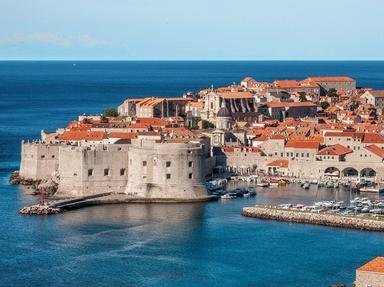Quiz Answer Key and Fun Facts
1. Located in the northern part of Croatia, the city of Pula is situated on which peninsula?
2. Who is normally credited with giving Dubrovnik the name 'the Pearl of the Adriatic'?
3. Korkyra Melaina was the original name of which Croatian island?
4. Croatia's highest peak is named for the mountain range which runs from Italy to Albania on the western side of the Balkans. What is the name of this range?
5. Founded in 1949, making it one of Croatia's oldest national parks, is this series of sixteen lakes connected by waterfalls. What is its name?
6. The photo shows The Square of the Victims of Fascism, which is located in which city, Croatia's most populated?
7. Not far from Split is the town of Trogir, with the fifteenth century Kamerlengo Castle one of its attractions. What does the name of Kamerlengo translate to in English?
8. Tvrdalj Castle is located on which of these hard to pronounce islands of Croatia?
9. Lokrum is an island only around 600 metres (just under 2000 feet) from Dubrovnik in the Adriatic Sea. Among the tourist attractions to be found there is which of these, sharing its name with a place mentioned in the Bible?
10. Located in the old town area of Split are the remains of the palace of which Roman emperor?
Source: Author
rossian
This quiz was reviewed by FunTrivia editor
agony before going online.
Any errors found in FunTrivia content are routinely corrected through our feedback system.
